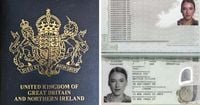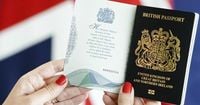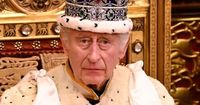In a move that blends tradition with cutting-edge security, the United Kingdom has announced a sweeping transformation of its passports, set to debut in December 2025. The new documents will bear King Charles III’s Coat of Arms on the cover—a change that officials describe as marking a new era in the history of British travel documentation. For the first time in five years, the passport will undergo a complete redesign, reflecting both a reverence for British heritage and a commitment to modern security standards.
The Home Office confirmed that the new passports will not only display the King’s Coat of Arms, featuring the Tudor crown adopted by King Charles as his royal cypher, but will also showcase the diverse natural beauty of the United Kingdom. Inside, travelers will find images of four UNESCO-protected landscapes: Ben Nevis in Scotland, the Lake District in England, Three Cliffs Bay in Wales, and the Giant’s Causeway in Northern Ireland. These iconic scenes are meant to represent the four nations of the UK, further emphasizing unity and national pride.
Migration and Citizenship Minister Mike Tapp was unequivocal in his enthusiasm for the changes. “The introduction of His Majesty’s Arms, iconic landscapes, and enhanced security features marks a new era in the history of the British passport,” he stated, according to multiple sources including Express and the Home Office. “It also demonstrates our commitment to outstanding public service—celebrating British heritage while ensuring our passports remain among the most secure and trusted in the world for years to come.”
Security is at the heart of this redesign. The government has described the upcoming version as “the most secure British passport ever made.” It will incorporate a suite of advanced anti-forgery technologies, including upgraded holographs, translucent features, and laser-marked unique passport numbers on every page. According to the Home Office, these innovations will make the passports easier to verify and “even harder to forge or tamper with.” Holographic and translucent elements, in particular, are designed to thwart counterfeiters and streamline border checks.
The government hopes these measures will help tackle illegal entry and strengthen Britain’s borders, delivering on the prime minister’s Plan for Change. Officials argue that these steps are not just about aesthetics or symbolism—they are a practical response to evolving threats and the need for secure, trusted identification in an increasingly interconnected world.
For travelers, the changes come with practical advice. The Home Office urges all British citizens to check the validity of their current passports and to apply for renewal well ahead of any planned travel. This is especially important given the new rules introduced after Brexit: any additional months added to a passport’s validity beyond the standard ten years are no longer accepted for travel to the European Union. This has caught some families off guard, resulting in missed flights and disrupted plans. The government recommends that travelers disregard any expiry date that extends more than ten years from the passport’s issue date, instead calculating their document’s validity based solely on the start date plus ten years.
Despite the imminent arrival of the new passports, those currently holding documents featuring Queen Elizabeth II’s Coat of Arms need not worry. The government has made it clear that these passports remain valid until their stated expiry date. Since 2023, passports have been issued in the name of King Charles, but until now, the late Queen’s coat of arms has continued to appear on the cover. The December update will finally align the document’s appearance with the new monarch’s reign.
The new design is the first major overhaul since 2020, when the passport’s color reverted from burgundy—adopted during the UK’s membership in the European Union—back to the traditional navy blue. This return to blue was itself a symbolic gesture, signaling a post-Brexit reassertion of national identity. Now, with the addition of the King’s Coat of Arms and the celebration of natural landscapes, the passport is poised to become an even stronger emblem of British heritage.
History buffs may appreciate the evolution of the UK passport over the past century. Modern-style passports, complete with photographs and signatures, have been issued since 1915. The first major security feature—a watermark—was added in 1972, and machine-readable passports followed in 1988. Since then, dozens of security enhancements have been introduced, from complex patterns to features visible only under ultraviolet light. Each innovation has aimed to stay one step ahead of forgers and to protect the integrity of British citizenship and travel.
The rollout of the new passports is part of a broader effort by His Majesty’s Passport Office to provide exceptional service. In the first six months of 2025 alone, over 3.8 million passports were issued, with 99.7% of straightforward applications processed within three weeks—surpassing the government’s own target of 98.5%. This efficiency is particularly welcome as international travel continues to rebound in the wake of the pandemic and as new global challenges emerge.
For many, the passport is more than just a travel document. It is a symbol of identity, belonging, and the right to move freely in the world. By blending the King’s Coat of Arms, breathtaking British landscapes, and state-of-the-art security, the new design seeks to honor that tradition while looking firmly to the future. As Minister Mike Tapp put it, the passport “celebrates British heritage while ensuring our passports remain among the most secure and trusted in the world for years to come.”
With December fast approaching, British citizens are encouraged to familiarize themselves with the new rules and features. Whether you’re planning a family holiday or a business trip, checking your passport’s validity—and perhaps admiring a piece of British history in your hand—has never felt more timely or important.


